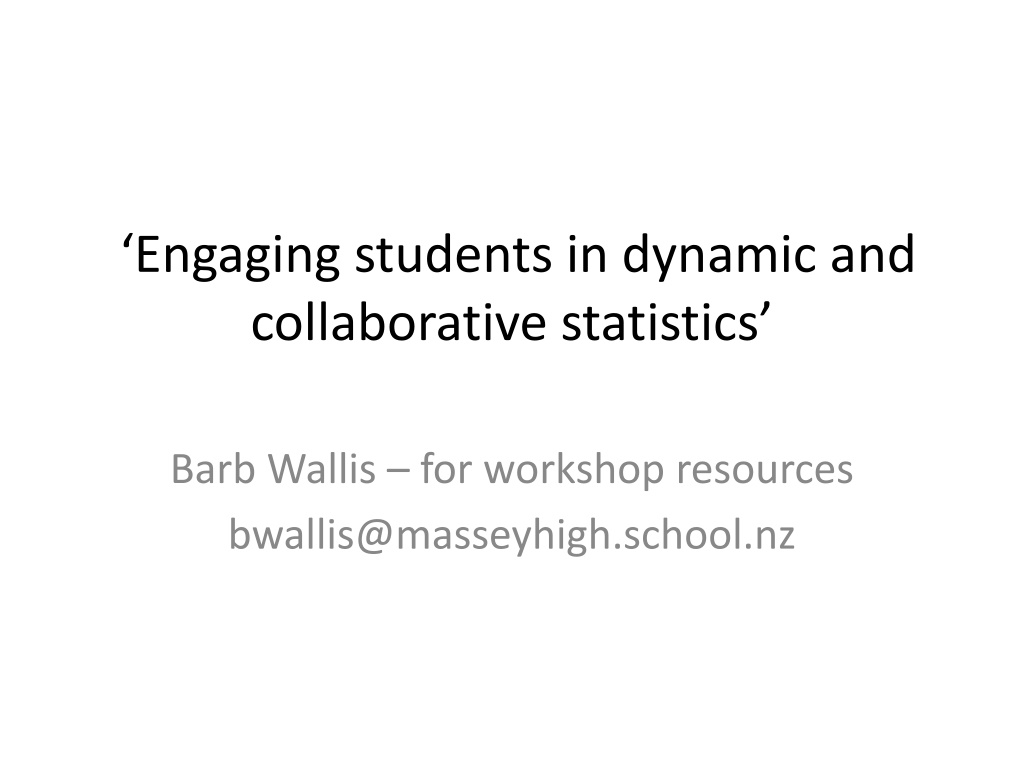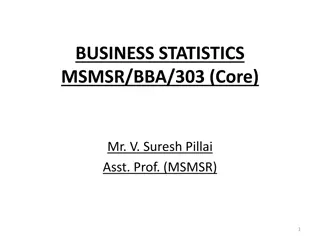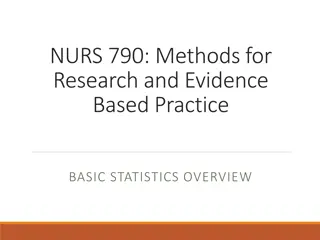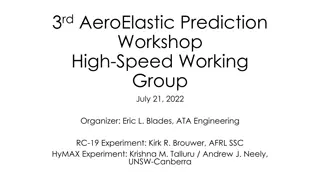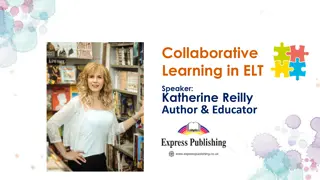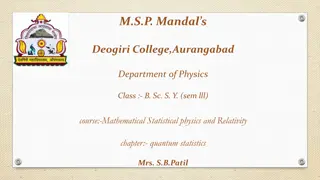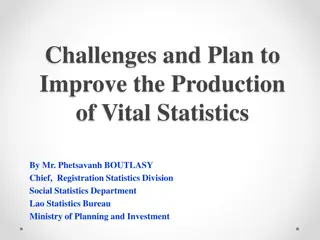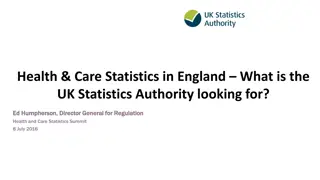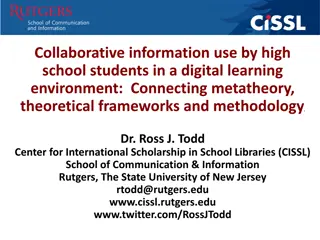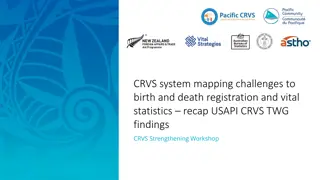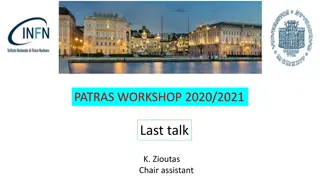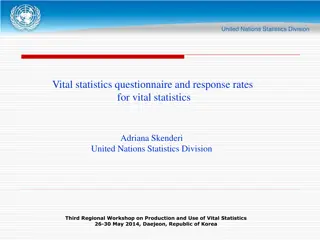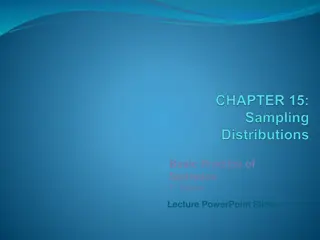Engaging Students in Dynamic and Collaborative Statistics Workshop
Workshop by Barb Wallis providing activities and ideas for Year 9 students to develop statistical confidence in multi-level classrooms. The session focuses on transitioning students from counting discrete data to understanding the inquiry cycle and descriptive aspects. Activities include a survey, introduction to the PPDAC cycle, and exploration of statistical inquiry concepts.
Download Presentation

Please find below an Image/Link to download the presentation.
The content on the website is provided AS IS for your information and personal use only. It may not be sold, licensed, or shared on other websites without obtaining consent from the author. Download presentation by click this link. If you encounter any issues during the download, it is possible that the publisher has removed the file from their server.
E N D
Presentation Transcript
Engaging students in dynamic and collaborative statistics Barb Wallis for workshop resources bwallis@masseyhigh.school.nz
A workshop of activities and ideas, for a differentiated teaching approach, that develops the statistical confidence of Year 9 students in multi-level classrooms. A progression of understanding for students that allows for a movement from counting aspects of discrete data to full appreciation of the inquiry cycle and the descriptive - interpretative aspects within it.
WORKSHOP DO NOW: Fold the paper into eighths 8 pieces, halves, quarters then eighths. Write the number 1 to 8 in the top left corner going across 1 then 2 etc. Write answers to the survey questions [Done with students as the first Yr 9 introduction of the PPDAC cycle whole class, groups, individual assignment]
Survey questions 1. How did you travel here this morning 2. What colour eyes do you have - choose from blue, brown, hazel, grey 3. How many motor vehicles do you have at your home include motorbikes 4. What ethnic group do you identify with most strongly 5. What is the length of your hand-span to the nearest centimetre 6. What time did you get up this morning 7. In what area is your school located (what was your Year 8 school for students) 8. How many people slept at your house last night
INTRODUCTION: Background referring to the ideas and thinking behind my Maths & Stats teaching and where they have arisen from.
Pip Arnold Multiple aspects of the PPDAC statistical inquiry cycle Peter Hughes Mathematics Pedagogical Content knowledge Caroline Yoon Model Elicitating Activities Jo Boaler How to learn Math
MAIN IDEAS Teaching as a wide NET of ideas and approaches Maths learnt as a whole process and emphasis on relating/understanding Inquiry relationship with maths Statistics alive for them Communication and collaboration Yr 9 scheme progression/expectations Student engagement Low entry high ceiling
Jo Boaler believes by encouraging inquiry, curiosity, confidence & intuition students will develop an inquiry relationship with maths. I think that in our statistics lessons we have an opportunity to act towards this goal.
The world our students will work in relies on teams of people developing ideas, communication and collaboration. As a Maths teacher we can offer them that experience.
Yr 9 MAIN ACTVITIES Class survey questions Investigate the throwing of a paper dart Ruler drop reactions Foot sole comparison C@S Data cards investigations Helicopter rotor blade length Big Foot
Getting started: Stats 1 Data collection for a Year 9 class. 8 Survey questions PPDAC cycle ---whole class for one survey question then groups for rest ---- draft, feedback, posters ---individual assignments using new data following marking schelude. Collect up data redistribute and follow PPDAC cycle to make a poster. MW & WL PPDAC cycle, posters.
Student engagement Stats 1 Investigate the throwing of a paper dart PPDAC cycle process complete, relaxed overview Use of a summative question. Refer separate sheet. Based on Harrier dart from Peter Newell workshop AMA Sat morning
Low entry high ceiling Check out our mind-set about ourselves as teachers. We can ask ourselves when looking at a problem, situation or an investigation - ask who is doing the maths ? Our classrooms need to be places where people actually do Maths. Problem solve, plan, find the question to ask, explore, give it a go, get it wrong, alter, decide what knowledge is needed, what method would be useful, discuss ideas with each other, explain their methods, hear other ideas and methods. Just as in music if we practice writing the notes and never play or hear an instrument, where is the joy and wonder in that?
Stats 1: Ruler drop reaction times Can take an activity and put the life back in. Can choose parts to structure. Some instructions for data collection are given. Work is done in pairs. Article as conclusion for extension Refer separate sheet
Stats 3: Comparing and Relationship questions Comparing the foot-length of boys & girls Worked through with the students providing a structured model over 5 to 8 periods. Diving off into particular areas such as Question types , sources of variation , data of interest , cleaning the data , dot plots to box & whisker graphs, graph shape and descriptions , statistical measures, intervals for histograms etc. Provision of a complete model of the investigation. Census in schools data cards Explore own question. Quick process teacher provided graphs for question on relationship between popiteal length and height. Students add own data.
Helicopter rotor blade length The structured worksheet is adapted to a PPDAC investigation in a similar way to the paper dart and reaction time by ruler activities. It is a more advanced use of the PPDAC cycle, sources of variation sorted in planning, expanded to whole class data collection and leads to source of box & whisker plots -including graphics calculators if available - use of statistical measures for I notice and conclusions. Also can be used as a basis of discussion of sample results; same scale boxes placed on the wall & then can look at the median variation by forming lines as a border (also upper and lower quartiles). Compare to combining the samples for stats information.
Big Foot Is an example of a model elicitating activity; Involves a warm-up activity, then a situation that teams work together on to develop an appropriate model that can be used beyond the current situation. In a class where this was used, a girl organised the rest of her group to stand against the wall apart, in proportion to their foot length. A cut-out of the footprint was placed in the best fit place of foot size. The top of the heads were marked as a line and then measured to find height of the person for the police. The model was then written up as a method and developed with the help of the teacher into a scatter graph form, using measurements rather than actual people.
RESOURCES Helicopter investigation Alan Santos/Gillian Frankcom Big Foot Caroline Yoon PPDAC power points and model of foot length investigation Annie Matthews, Roopa Ashok, Barb Wallis & Nik Wallis Peer assessment Julie Stewart Dirty data Pip Arnold Black sticks investigation Jen Triggs Dot plots and Box & Whisker graphs St Marys Freemans Bay Marking scheludes Stats 1 & 3 Julie Stewart, Barb Wallis, Robin Knox & Sowbhagya Gundugollu
EXIT CARD [CARD example such as write on the axes what these graphs could be showing collect in to check understanding individual/class] Workshop = write one workshop idea you are going to enact.
